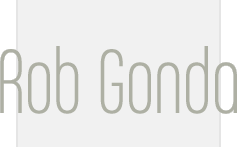Audible Ajax Episode 15: Kevin Hakman of TIBCO
Ajaxian.com put together a nice podcast with Kevin Hakman of Tibco. They covered all the points below.
- When did TIBCO start in the Ajax business?
- Why did you decide to get into the Ajax business…why now?
- What exactly is TIBCO GI? Is it a tool? Is it an API? What do you get with this?
- Do you see people actually using the libraries separate from the GUI builder or do most customers use them directly together?
- What does your tool do to make parsing SOAP messages easier?
- A lot of users start with something like Prototype of Dojo for Ajax. What does TIBCO GI offer (use cases, applications?) over one of those frameworks?
- What is the authoring experience like with your tool?
- TIBCO GI sounds a lot like the modern incarnation of Flash (xml markup for vector-based UI, ActionScript, JavaScript event handlers). How does your tool compare? Are they similar or distinct in implementation?
- How sophisticated is your auto-completion? How limited is it and what other IDE static-language type goodies have you given the environment?
- The GI Builder is a JavaScript app that uses your technology (you eat your own dog food). Are you waiting for a JIT to come out to help with performance issues or are you finding in practice that JavaScript can perform adequately on the client?
- Why is your product limited to Internet Explorer? Do you have plans to expand that?
- What were some of the porting issues that you found going from this IE codebase to Firefox?
- We’re excited to see a business application for some of Firefox’s newer more exotic features like SVG and Canvas. Are you going to be able to utilize some of those in your product as well?
- Java engineers think about multi-threaded applications a lot. With JavaScript being single-threaded, do you have performance concerns? What are some techniques you’ve used to achieve this very responsive UI?
- IE is known for its memory leaks. Does your tool handle some of those? How do you work around it?
- Is your tool capable of creating something like Zimbra’s UI?
- Is your tool agnostic; integrating with any backend?
- RE: Desktop UI technologies. How competitive is your windowing system with more traditional desktop technologies? Do you acknowledge a point where someone should look at a desktop technology, or do you think your tool can facilitate the creation of arbitrarily complex user interfaces?
- Have you done any benchmarks on what makes sense to use for exchanging data (XML, JSON, etc.)?
- What’s the model for creating custom widgets in your tool?
- Can you tell us about today’s release? Where to download, etc.?
- So someone can create a free web-hosted alternative to Zimbra or MS Office using your tool to visually create it and do all the data manipulation — then release it for free?
- Once I start charging for access to the website/product, what is the pricing model? What about charging for a commercial software product release?
- Why should we check out your product in today’s overwhelmingly crowded toolkit/framework market?




